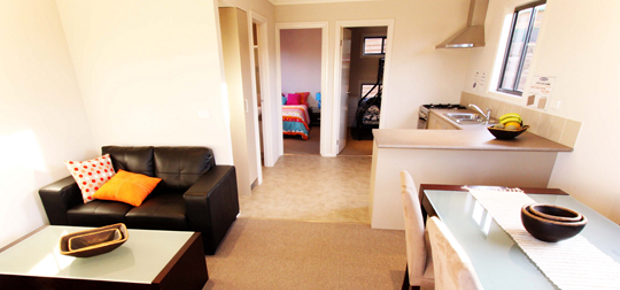
With life expectancies continuing to rise and the population of post-WWII baby boomers just hitting retirement, accommodation for the elderly is in high demand. While there are many pitfalls to avoid when undergoing a property renovation project in general, when the property is intended to be inhabited by senior citizens or those with disabilities, there are specific considerations which must be made. For instance, falls are the leading cause of death among the elderly and 87% of fractures in the elderly are caused by falls. Because of this, designing a property to be both safe and easily accessible is of paramount importance. If your renovation project is intended to cater to the elderly or the disabled, here are some tips to improve safety and accessibility.
The bathroom
Out of all areas in the home, the bathroom is by far the most hazardous for the elderly. Slippery water on the bathroom floor is usually the culprit for most bathroom accidents. Fortunately, there are certain measures you can take to stop these kinds of injuries from occurring.
- For wheelchair users, lowered sinks are essential, as are walk in baths and showers.
- If possible, locate the bathroom on the main floor of the home. Otherwise, a chairlift should be installed for those with mobility issues.
- Handrails should be fitted throughout the bathroom and must be at the appropriate height for a wheelchair user.
- The bathroom itself must be larger than standard, and must be able to accommodate for a wheelchair user to turn around 360 degrees with room to spare.
- Toggle light switches and light switches which can be seen in the dark may be appropriate, particularly for the visually impaired.
- Use an anti-slip material for the flooring of the bathroom.
- For wheelchair users, an out-swinging bathroom door measuring 3 feet wide is preferable.
- For people with disabilities like arthritis, taps with levers are easier to use than ones with handles.
- A hand held shower is easier to use.
- A wall mounted soap pump is a better option than regular soap bars.
- If appropriate, a raised toilet seat should be installed.
The kitchen
Whether the kitchen will be used as a place to socialise or strictly a place for cooking and eating, a good design will ensure that an elderly or disabled person gets the maximum benefit from the space.
- As with the bathroom, the sinks must be designed with the inhabitant in mind. For wheelchair users, doors under the sink can be removed to allow for easy access. There are even motorised sinks that can raise and drop as and when required.
- Longer handles make cabinets and drawers easier to open.
- Raising the height of the dishwasher is beneficial if the inhabitant finds it difficult to bend over.
- To reduce strain, pullout shelves may be implemented in lower cabinets.
- An anti-scald device may be installed for maximum safety. This can also be applicable to the faucets and shower head in the bathroom.
- As with the bathroom, a durable type of anti-slip flooring is advisable.
The bedroom
The bedroom must be designed to allow for the elderly or disabled person to get in and out of bed with ease, and go about their daily life without hassle. Since clutter can be hazardous to an elderly or disabled person, it is imperative that the bedroom is designed to minimise this risk.

- The ideal location for the bedroom is on the ground floor of the home, both for convenience and safety. For instance, if there is a power outage and the bedroom is not on the ground floor, an accident is more likely to occur.
- An extra phone jack is ideal for the bedroom, since this provides the inhabitant with a guaranteed point of contact for the outside world in case of emergencies.
- Lighting is very important in the bedroom, particularly for the visually impaired – so don’t skimp on the costs. Ensure that there are no dark corners and that closets have their own lighting if necessary.
- There should be a light switch within reach of the bed, and another at the entrance of the room.
- Safety handles on the bed are useful for improving accessibility. The height and type of bed should be chosen depending on the needs of the specific inhabitant.
Whether you’re renovating a property for a retirement home or are simply designing a place for when you get older, these tips will help to ensure that your property is both easy to use and hazard-free. Remember when renovating a property for the elderly, always ensure you have the correct insurance.
(Photos by Matt’s homes and psarahtonen)





Comments are closed.